Mar
24
2010
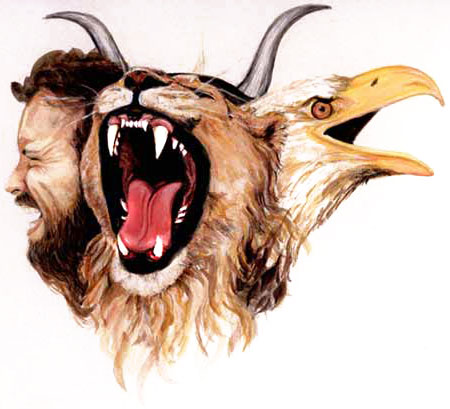
Most commentators, including N. T. Wright, get the Restoration era all wrong. Our history as God’s people is cruciform, which is reflected in the four faces of the cherubim. The Mosaic “bull face” (the Bronze Altar) was replaced with the Davidic “lion face” (the Ark). The Ark was taken by God, and the era of the prophets began, the “eagle face” (the all-seeing Lampstand). Resurrected Israel was to be wise men to Gentile kings, leaven within the kingdoms shown to Nebuchadnezzar. They would not have a Jewish king until the fourth face, the Man, arrived (the Table of Showbread).
Continue reading
1 comment | tags: Esther, Haman, James Jordan, Tabernacle | posted in Quotes, The Restoration Era
Mar
20
2010

or Animal, Vegetable, Mineral
There’s some weird stuff in Leviticus. It is deliberately so, forcing us to chew on it, which in turn forces us to see the world in terms of symbols, as God intended. Most of us moderns can’t be bothered with it. It’s beyond our capacity. We think such notions are childish when in fact they require an uncommon wisdom.
Continue reading
4 comments | tags: High Priest, James Jordan, Leviticus, Tabernacle, Typology | posted in Biblical Theology, Quotes
Mar
19
2010
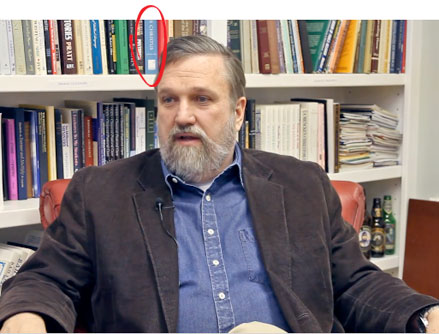
There’s nothing better than theologians who basically agree on lots debating the finer points. Jordan and Wilson have different ideas on what a classical education should consist of. Somehow, I agree with both of them. Typical fanboy. You can watch the video here.
Continue reading
Comments Off | tags: Doug Wilson, James Jordan, Totus Christus | posted in Christian Life, Totus Christus
Mar
13
2010
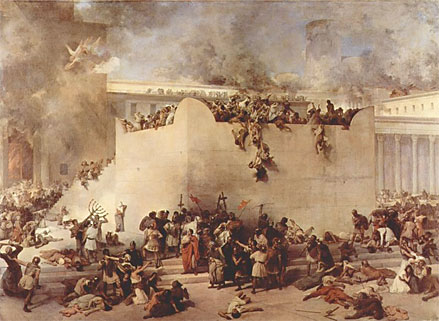
Understanding the “Trinity” of the Bible’s Garden, Land, World architecture is one of the most helpful keys to making sense of the prophets, Matthew 24 and the Revelation. [1] James Jordan writes:
“The Bible repeatedly speaks of the ‘ends’ of the earth. Sometimes the word in Hebrew is ephes, which means ‘end, extreme limits, nothingness.’ Other times it is qatsah or qetsev, which means, again, ‘end, extremity.’ Deuteronomy 13:7, for instance, uses the expression ‘from one end of the earth to the other end.’ Continue reading
Comments Off | tags: James Jordan, Tabernacle | posted in Biblical Theology, The Last Days
Mar
8
2010

“God’s Cloud over the people forms a Great Booth, within which they live. That Cloud over them is like the glorious canopy of a leafy tree, and thus the reproduction of such an arboreal canopy is a symbol of God’s Cloud.”
An important thread of God’s methodology is His process of bringing us from slavery to Sabbath, from childhood to maturity. It begins with Creation and ends with Glorification.
The Lord speaks the Word from His glory cloud—like the Light created on Day 1—and a stagnant history begins to move forward once again. At the end of the process the Lord returns in His cloud, but it is now made of something even better. The Lord’s robe is no longer a covering of Angels but a covering of redeemed, glorified Men.
In the Tabernacle, the housebuilding process begins with the Ark as “Light” and ends with God’s Cloud—the Shekinah—resting upon it. In the Feasts, it begins with the regular Sabbath as the Creation week and ends with the Feast of Tabernacles, the greater rest. Continue reading
Comments Off | tags: Feasts, James Jordan, Tabernacles | posted in Biblical Theology
Feb
20
2010
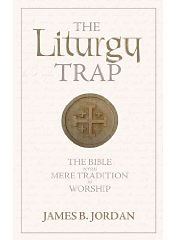
.
God knows us infinitely better than we know ourselves. God has said that celibacy is “not good.” It is not good for the man and not good for the church. A celibate clergy will distort the gospel in subtle ways without meaning to do so, because they are living in an unsatisfactory situation.
Continue reading
2 comments | tags: Fasting, James Jordan, Marriage, Reformation | posted in Christian Life, Quotes
Feb
19
2010
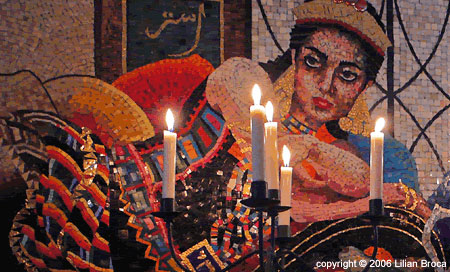
or Smells Like Holy Spirit
A friend recently gave me a unique gift. With some difficulty and great expense, he sourced the ingredients for the anointing oil of the Aaronic priesthood and I was the grateful recipient of a small, blue vial.
The scent of the oil is intoxicating. You breathe it in and in some strange way you can “taste” it as it goes down. It is extremely complex and yet a single fragrance. Continue reading
Comments Off | tags: Ark of the Covenant, Atonement, Covenant Theology, Creation Week, David, Esther, Ezekiel, Genesis, Greater Eve, Incense Altar, James Jordan, Peter Leithart, Resurrection, Saul, Tabernacle | posted in Biblical Theology, Quotes, The Last Days, The Restoration Era
Feb
5
2010
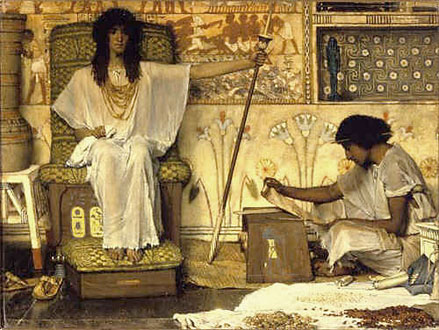
The Pharisees’ call for miracles from Jesus was a sign of immaturity. As the story of the patriarchs demonstrates, the growing maturity of the people of God is illustrated in less of a need for proofs. The Word is enough. Miracles are occurring around the world in places where the gospel is new and faith needs assurance. In the West, genuine miracles of this nature seldom occur. Is it due to a lack of faith or a call to greater faith? We have had the Scriptures forever, and the childish desire for (and manufacturing of) miracles, betrays a reversion to childhood.
Continue reading
2 comments | tags: Abraham, Genesis, Jacob, James Jordan, Joseph, Maturity, Spiritual Growth | posted in Biblical Theology, Christian Life, Quotes
Jan
26
2010
or James Jordan’s Big Hammer
 “My God, it’s full of stars!”
“My God, it’s full of stars!”
One of the reasons I appreciate James Jordan is his ability to identify the “universals” in Scripture. Understanding these recurring themes answers many questions and solves many mysteries. These universal “roles” and events all point forward to the events of the first century. For instance, we cannot understand what the apostles meant by the phrase “the sons of God” without checking its history in the Old Testament. [1]
The danger with dealing in all the “big picture” stuff is that it can become self-serving. The heart is deceitfully wicked, and theology can become a kind of escapism, an ideology. Like the worst of the 20th century’s political ideologies, it can be divorced from reality so that in practice it rides roughshod over people to achieve its goals. Any big theology must maintain a big pastoral heart.
[This post has been refined and included in Sweet Counsel: Essays to Brighten the Eyes.]
Continue reading
2 comments | tags: Doug Wilson, James Jordan, Literary Structure, Postmillennialism, Typology | posted in Biblical Theology, Christian Life
Jan
16
2010
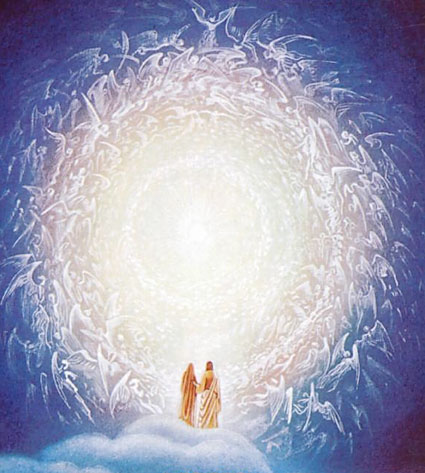
Then He said, “Do not draw near this place. Take your sandals off your feet, for the place where you stand is holy ground.” Exodus 3:5
A sacrifice is literally a nearbringing. James Jordan suggests that instead of sacrifice or offering, a better translation of the word qorban would be “nearbringing”:
“The English “sacrifice” tends to connote the idea of giving something up for someone else. That has little if anything to do with qorban. “Offering” tends to connote a gift, which again has nothing to do with qorban. The word means to draw near, to get into close relationship with someone, and it is used only in relationship to God. We do not worship God by giving Him anything, for He needs nothing. We do not worship God by giving up anything good, for He is the one who has given us all good things. We worship God by drawing near to Him.” [1]
The first nearbringing was the marriage Covenant between Adam and Eve. There was blood when Adam was “divided” so that Eve might be “constructed.” [2] And we can assume that when Adam and Eve were first physically united there was also blood.
Continue reading
Comments Off | tags: Genesis, James Jordan, Peter Leithart | posted in Biblical Theology, Quotes, The Last Days



































